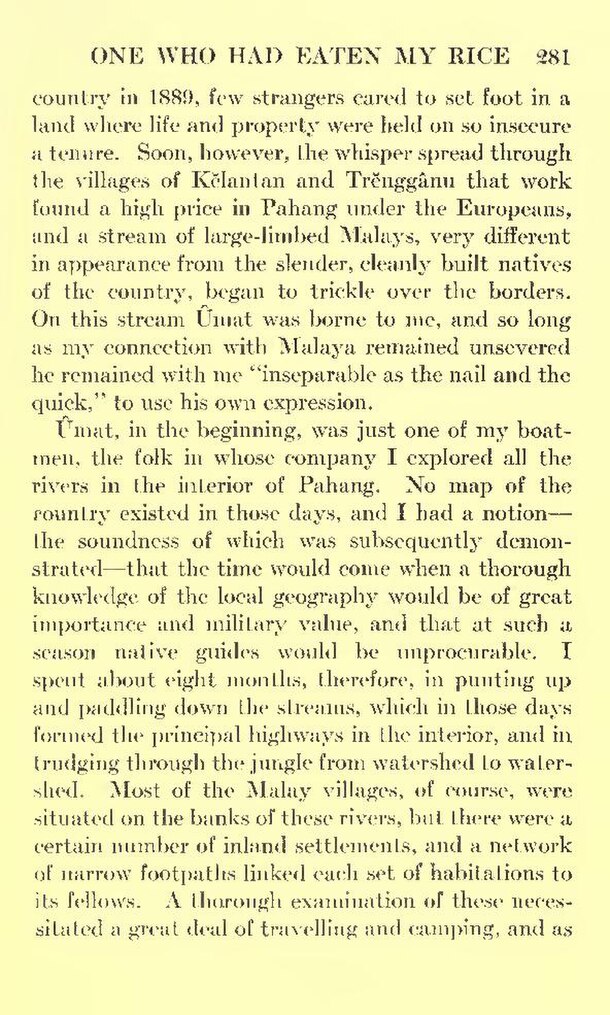country in 1889, few strangers cared to set foot in a land where life and property were held on so insecure a tenure. Soon, however, the whisper spread through the villages of Kelantan and Trengganu that work found a high price in Pahang under the Europeans, and a stream of large-limbed Malays, very different in appearance from the slender, cleanly built natives of the country, began to trickle over the borders. On this stream Ûmat was borne to me, and so long as my connection with Malaya remained unsevered he remained with me "inseparable as the nail and the quick," to use his own expression.
mat, in the beginning, was just one of my boat- men, the folk in whose company I explored all the rivers in the interior of Pahang. No map of the rountry existed in those days, and I had a notion-- the soundness of which was subsequently demon- strated that the time would come when a thorough knowledge of the local geography would be of great importance and military value, and that at such a season native guides would be unprocurable. I speut about eight months, therefore, in punting up and paddling down the streams, which in those days formed the principal highways in the interior, and in trudging through the jungle from watershed to water- shed. Most of the Malay villages, of course, were situated on the banks of these rivers, but there were a certain number of inland settlements, and a network of narrow footpaths linked each set of habitations to its fellows. A thorough examination of these neces- silated a great deal of travelling and camping, and as
